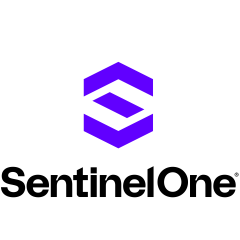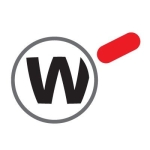What is our primary use case?
We need to provide a form of antivirus for our cybersecurity insurance. The new term now is EDR or endpoint detection response. I tested out several vendors including CrowdStrike, SentinelOne, and Cisco. SentinelOne definitely stood out. My use case is pretty for much protecting all of my end-user devices and all of my servers on-premise and in our virtual environment.
How has it helped my organization?
We were trying to solve for visibility and license management. We used to use other products, and licensing became an issue. We would have issues where clients would not really be connected all the time. They would just randomly lose connection. And that was with McAfee.
ESET was another one that we used in the past, and we just kept running the issues with the physical server. So having a cloud-managed EDR solution, the agent-based, cloud-managed solution, has worked very well for a few years now at multiple companies. It's the first thing I bought when I came to my new company.
What is most valuable?
I really like Ranger. I like the deep dive of Ranger in an incident section. Diving into each incident and being able to see complete visibility of when the action was taken against something that it deemed a threat is valuable. Using those incidents in Ranger is definitely up there on my list of favorite features. I have multiple locations all across the globe. Being able to separate my devices, per location, is super helpful.
It's good at ingesting data and correlating. It has zero issues with ingesting data with the agents installed. I've had no issues with that. Being able to go through and create exclusions for specific types of data, like SQL has been really tough in our environment. Being able to just go through and customize those exclusions and working with the support team is great. We also have Vigilance, which is another SOC that they offer. That's a fantastic service.
Everywhere I have an agent, it sees everything, and it does so when I deep dive into a threat or a proposed threat. It does pick out host names, and IP addresses, and it just gives you a really clear picture where you can read it.
I like that Ranger requires no new agents or hardware. Anytime you can keep it lightweight enough. If you add a function and you only pay for your yearly fee for an extra function without making changes in your environment, that's huge.
I love the reporting. The reporting definitely helps me see the entire network and find what open ports are out there. I can work with my network team to get those things closed, which is fantastic. I like the ease of looking at the graphs and the reports.
The solution has helped reduce our alerts. Instead of waiting on a monthly basis and then executing a plan, I'm able to keep up with it all throughout and day to day. That granular control has left me very impressed.
It gives me peace of mind. My staff isn't really using it. I know I have 24/7 eyes on it.
It has helped me reduce my mean time to detect. I would be lost without the tool. It definitely helps me figure things out really quickly. I can figure out the whole story very quickly.
It helps with my mean time to respond. It definitely helps with that. I get an alert in my email immediately, which lets me just know that something happened to my environment. That's something that I previously did not have in my old tool set.
What needs improvement?
I do want to see Vigilance reach out with that Identity. I don't have Identity, however, it's a very good tool. There is another tool that I use called Purple Knight that does very similar things. I'd like to see adding Vigilance to the visibility of Identity.
One thing I don't like is the exportable report. They're not as useful as I'd hoped they would be. I always feel like I have to finagle them a little bit before I can present them to the executive board. The reporting needs to be beefed up a bit more. Everything feels a little lacking. They're trying to keep it simple, yet it is a little oversimplified.
I really wish it could be an app on my phone. If I could open up an app on my phone and get all the alerts or look at my environment and see the health real quick, that would be ideal. It doesn't have to be a full feature.
I'd like the ability to have text alerts, for example, if something gets quarantined.
The website, if you are trying to figure out what all the products are, it's kind of busy. I don't know what all the products are. The marketing is a little tough to follow.
For how long have I used the solution?
I've been using the solution for three years.
What do I think about the stability of the solution?
I haven't experienced any stability issues.
What do I think about the scalability of the solution?
The solution is extremely scalable. It's super easy to push out to thousands of clients if you really need to. I haven't had any issues. It scales very well.
How are customer service and support?
Usually, technical support is very good. They are very knowledgeable. It's usually 24 hours for a response. I've had a couple of phone conversations with them. Right now, we're going basically through email. They give me a ton of information. They're open to working with my third-party MSP. Right now, the MSP brought up a concern about a very specific function that needs a little bit more tending to in the exclusion arena.
How would you rate customer service and support?
Which solution did I use previously and why did I switch?
We had Defender at this company before.
How was the initial setup?
I was involved in the initial setup.
The deployment is very straightforward. It's super easy to just download your agent, and you get your site token, you install, and you push it out. We use the PDQ at my last company. Here, we use SCCM. We push it out with the MSI, with the site token pre-installed. I see it on my dashboard. It's easy.
My last deployment was handled by myself.
The solution does not require any maintenance anymore. It used to be kind of a headache to go through and have to update the agent. And just to remember to do it. Now I get the email. It tells me there's a new agent out there. I go read up on what the changes are, which is great. Then I go in there and set up the auto-install on the agents, and it just hits them on the schedule. You only have to really pay attention to it once in a blue moon when a new agent is installed or there's a general release.
What about the implementation team?
I installed the solution myself.
What's my experience with pricing, setup cost, and licensing?
I can pay, for my environment, between $30,000 and $40,000 a year, and that's a pretty good deal.
What other advice do I have?
I'm a customer and end-user.
I haven't really done any third-party tools. I've looked into their Identity tool which is one of the newer offerings that they have. It's a very nice offering. It is rather expensive. That said, it is very nice to be able to see Active Directory all in one pane of glass. Honestly, the hardest thing about my job as a security professional is having all these different tools so the more I can see everything in one area, the better it is.
The quality and maturity are important. The company is relatively new in the space, however, they are pretty mature in the market and pretty well-respected.
SentinelOne is a great strategic partner. I can't see myself doing security without them at this point. They are one of the backbones of my security platform. They were the first pieces even before I bought Cisco Duo or Meraki.
I'm excited to see where this will be in the next ten years. I can just see this platform just going crazy. I would love to see maybe a little bit more focus. We have to deal with a lot of sensitive equipment that run specific jobs and I love how SentinelOne, and specifically Ranger, is very passive in its ability. It complements our OT. I would love to see some way of getting away from the super expensive platforms of Tenable and bringing in some of these functions that Tenable offers from a scanning platform fully into SentinelOne in the future.
I'd rate the solution nine out of ten.
This is a best-in-breed solution. If you're looking at anything in comparison, do your due diligence, do proof of concept between whatever companies you're looking into. However, SentinelOne is the best-in-breed.
Which deployment model are you using for this solution?
On-premises
Disclosure: PeerSpot contacted the reviewer to collect the review and to validate authenticity. The reviewer was referred by the vendor, but the review is not subject to editing or approval by the vendor.



















